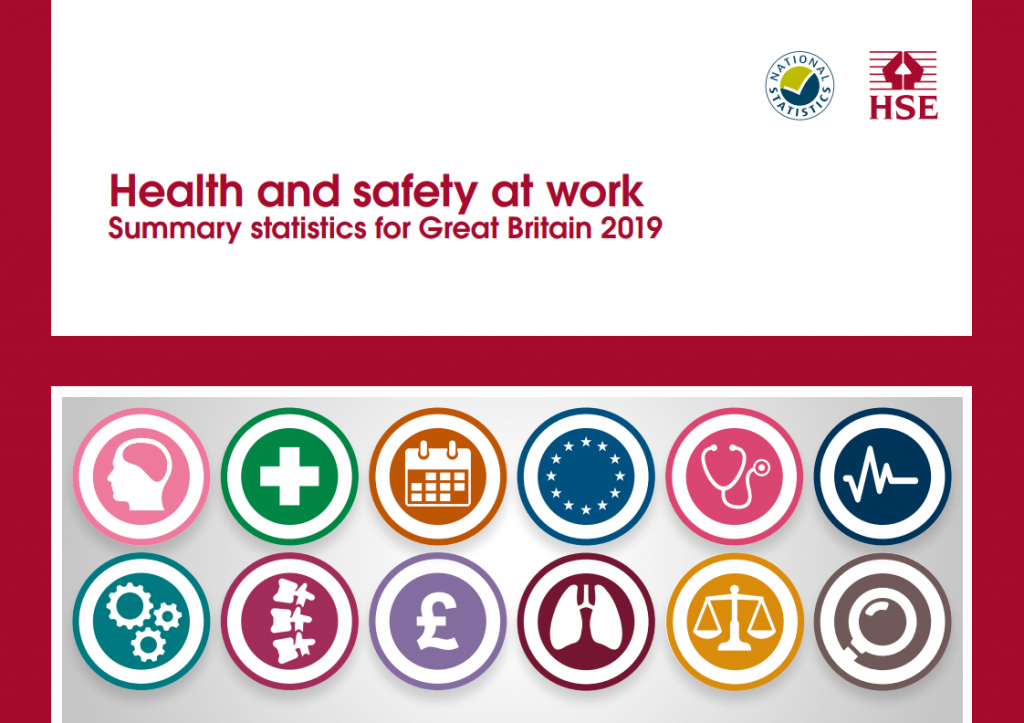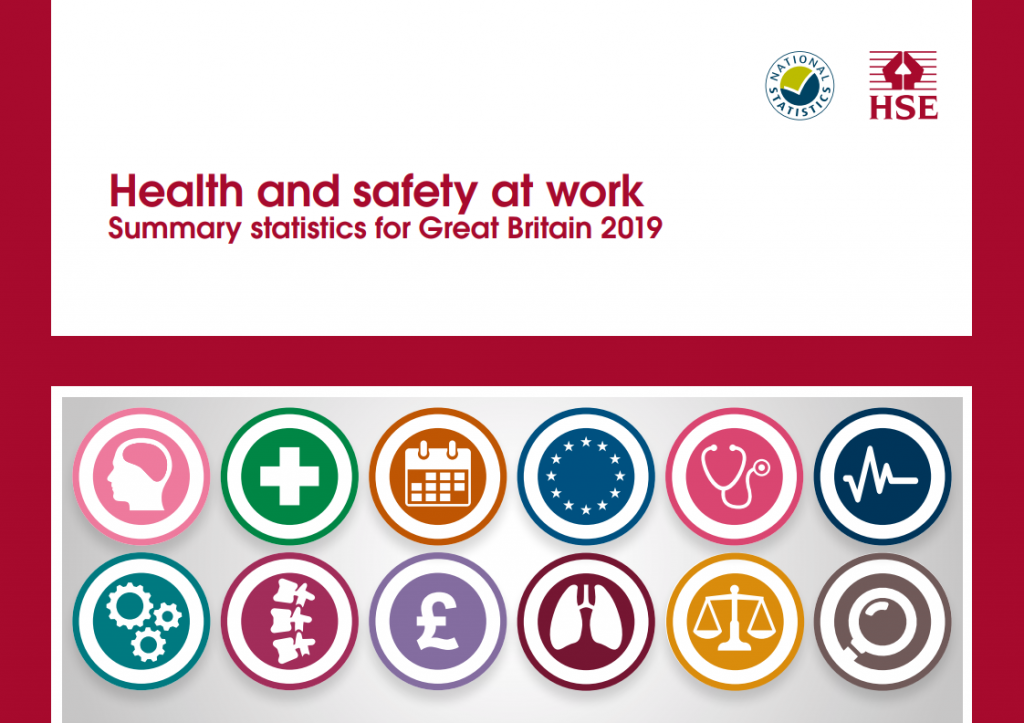
The HSE have released the annual health and safety figures for the year 2018/2019, and here are the key takeaways:
1. Work related ill-health cases are a mixed bag:
The cases for new and long-standing illnesses last year totalled 1.36 million; and this year’s figure is down ever so slightly (1.35 million); however work-related musculoskeletal disorder cases (498,000) are up from last year (470,000) by a large 28,000 cases.
Stress, depression or anxiety cases (which made up 44% of all illness cases last year and an almost identical 45% this year) are up by around 6,000 and are responsible for 54% of all working days lost due to illness this year. However, working days missed due to stress, depression or anxiety are 2.7 million less than last year; a significant improvement.
Overall, working days lost due to all work-related ill health are down by almost 3.5 million; however the annual total costs of illness to businesses (around £15 billion) has remained unchanged from last year.
2. Fatal injuries to workers have gone up:
In 2017/18 there were 141 worker fatalities and in 2018/19 the figure is up to 147, which is the joint highest figure for 6 years but slightly lower (149) than the ten-year average since 2009/10. However a downward trend still remains overall, with the latest ten-year average a full 56% lower than the previous decade’s average of 233 fatalities a year.
3. Workplace fatal injuries to members of the public have gone down:
Fatal injuries to members of the public have declined from last year, with the latest figure of 92 the lowest since 1996 and well below the 1999 to 2019 twenty-year average of 322* fatalities. In Europe as a whole, the UK still retains a lower workplace fatality rate than Germany, Italy, France and Spain – in fact the UK three-year average rate for 2013-2015 was the lowest of all EU member states.
*Major changes in 2013/14 and 2015/16 to what is included in public fatalities figures should be taken into account when interpreting these statistics.
4. Less people are getting injured at work:
This year there were 2,323 less non-fatal injuries than last year (69,208 injuries compared to last year’s figures of 71,531). This latest figure is the lowest recorded since 1985, and the rate of non-fatal injuries to workers has shown a long-term downward trend overall. As a result, 28.2 million working days this year were lost due to work-related ill-health and non-fatal injuries compared to 30.7 million days last year; a significant improvement.
5. The HSE prosecuted less cases this year
2017/18 saw 11,522 notices issued by enforcing bodies, 493 cases prosecuted (or referred to COPFS in Scotland) by the HSE, and £72.6 million in fines from such convictions; and 2018/19 saw slightly less issued notices (11,040), more than 120 less prosecutions (364) and £54.5 million in fines — £18.1 million less than last year. However, the average fine per case this year is similar to last year (£150,000 and £148,000 respectively), which indicates that the significant drop in fines is most likely a result of the fall in HSE prosecutions.
Bibliography
HSE (2019) ‘Health and safety statistics’. Available at: http://www.hse.gov.uk/statistics/ (accessed: 11/11/2019)
HSE (2019) ‘Workplace fatal injuries in Great Britain, 2019’. Available at: http://www.hse.gov.uk/statistics/pdf/fatalinjuries.pdf (accessed: 12/11/2019)
HSE (2019) ‘Kinds of accident statistics in Great Britain, 2019’. Available at: http://www.hse.gov.uk/statistics/causinj/kinds-of-accident.pdf (accessed: 12/11/2019)
HSE (2019) ‘Historical picture statistics in Great Britain, 2019 – trends in work-related ill health and workplace injury’. Available at: http://www.hse.gov.uk/statistics/history/index.htm (accessed: 12/11/2019)
HSE (-) ‘European comparisons’. Available at: http://www.hse.gov.uk/statistics/european/ (accessed: 12/11/2019)
HSE (2019) ‘Health and Safety statistics in the United Kingdom, 2019’. Available at: http://www.hse.gov.uk/statistics/european/european-comparisons.pdf (accessed: 12/11/2019)
HSE (2019) ‘Enforcement statistics in Great Britain, 2019’. Available at: http://www.hse.gov.uk/statistics/enforcement.pdf
HSE (2019) ‘LFS – Labour Force Survey – Self-reported work-related ill health and workplace injuries: Index of LFS tables’. Available at: http://www.hse.gov.uk/statistics/lfs/index.htm#illness (accessed: 13/11/2019)




